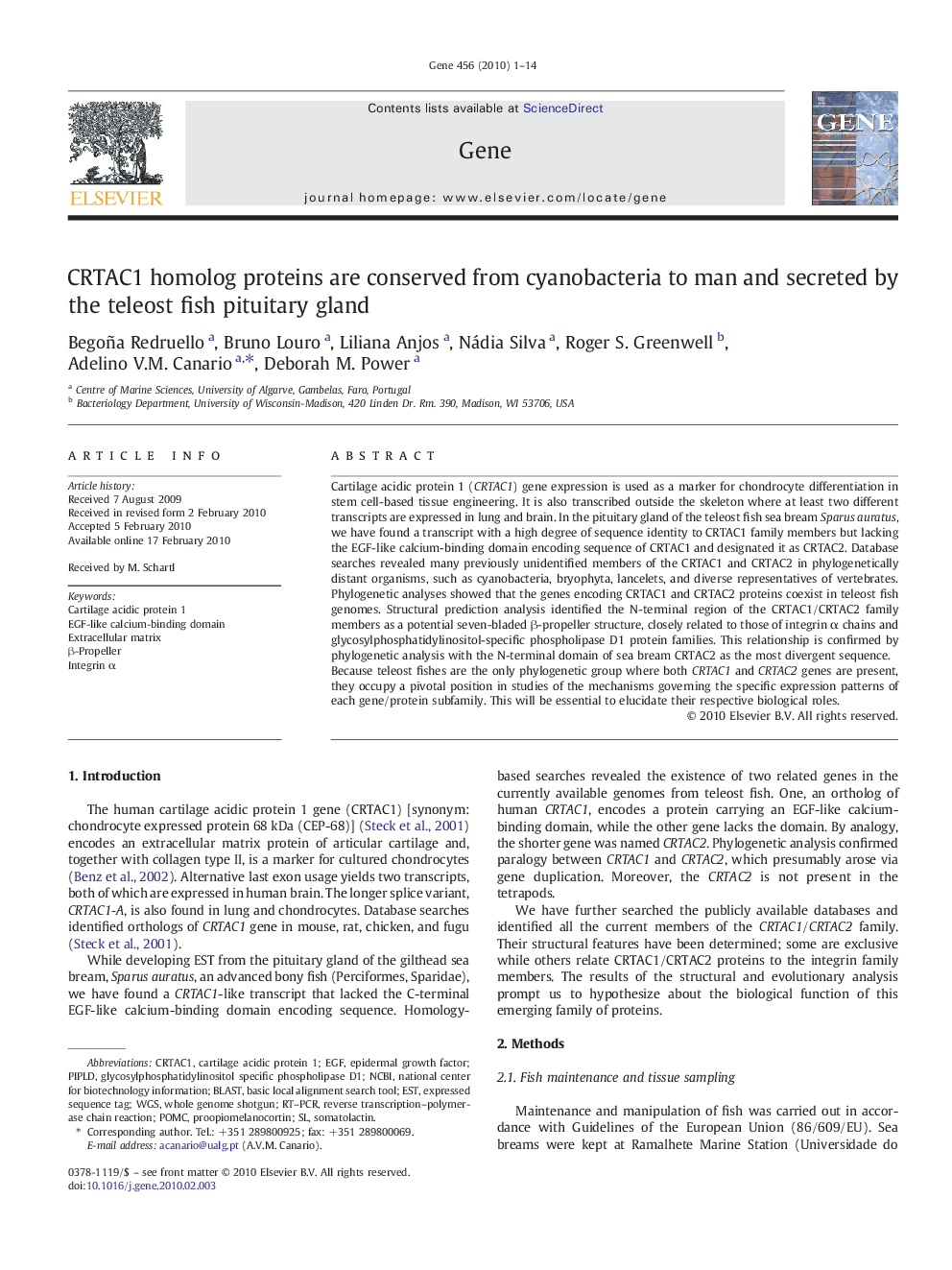| Article ID | Journal | Published Year | Pages | File Type |
|---|---|---|---|---|
| 2818656 | Gene | 2010 | 14 Pages |
Cartilage acidic protein 1 (CRTAC1) gene expression is used as a marker for chondrocyte differentiation in stem cell-based tissue engineering. It is also transcribed outside the skeleton where at least two different transcripts are expressed in lung and brain. In the pituitary gland of the teleost fish sea bream Sparus auratus, we have found a transcript with a high degree of sequence identity to CRTAC1 family members but lacking the EGF-like calcium-binding domain encoding sequence of CRTAC1 and designated it as CRTAC2. Database searches revealed many previously unidentified members of the CRTAC1 and CRTAC2 in phylogenetically distant organisms, such as cyanobacteria, bryophyta, lancelets, and diverse representatives of vertebrates. Phylogenetic analyses showed that the genes encoding CRTAC1 and CRTAC2 proteins coexist in teleost fish genomes. Structural prediction analysis identified the N-terminal region of the CRTAC1/CRTAC2 family members as a potential seven-bladed β-propeller structure, closely related to those of integrin α chains and glycosylphosphatidylinositol-specific phospholipase D1 protein families. This relationship is confirmed by phylogenetic analysis with the N-terminal domain of sea bream CRTAC2 as the most divergent sequence.Because teleost fishes are the only phylogenetic group where both CRTAC1 and CRTAC2 genes are present, they occupy a pivotal position in studies of the mechanisms governing the specific expression patterns of each gene/protein subfamily. This will be essential to elucidate their respective biological roles.
